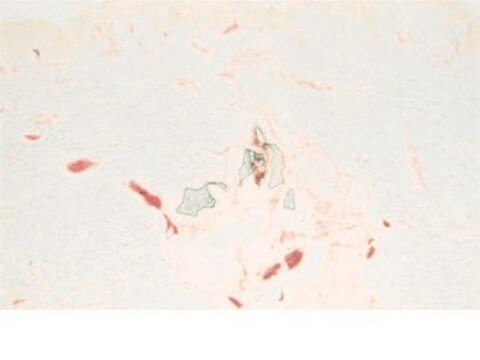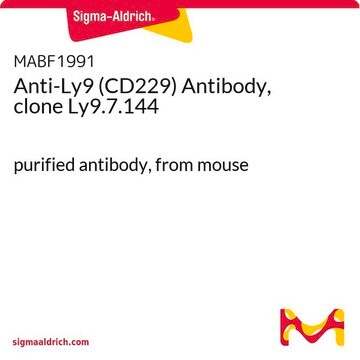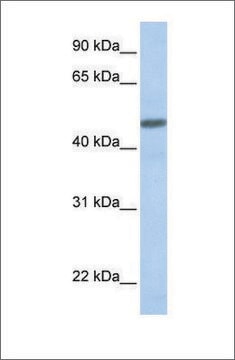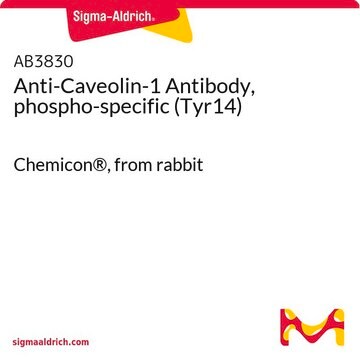05-591-AF647
Anti-Akt/PKB Antibody, PH Domain, clone SKB1, Alexa Fluor™ 647
clone SKB1, from mouse, ALEXA FLUOR™ 647
Synonim(y):
RAC-alpha serine/threonine-protein kinase, PKB, PKB alpha, Protein kinase B, Protein kinase B alpha, Proto-oncogene c-Akt, RAC-PK-alpha
About This Item
Polecane produkty
pochodzenie biologiczne
mouse
Poziom jakości
białko sprzężone
ALEXA FLUOR™ 647
forma przeciwciała
purified antibody
rodzaj przeciwciała
primary antibodies
klon
SKB1, monoclonal
reaktywność gatunkowa
human, mouse, rat
metody
immunocytochemistry: suitable
izotyp
IgG
numer dostępu NCBI
numer dostępu UniProt
docelowa modyfikacja potranslacyjna
unmodified
informacje o genach
mouse ... Akt1(11651)
Opis ogólny
Specyficzność
Immunogen
Zastosowanie
The unconjugated antibody (Cat. No. 05-591) is shown to be suitable also for flow cytometry, immunocytochemistry, immunoprecipitation, and Western blotting applications.
Apoptosis & Cancer
Kinases & Phosphatases
Jakość
Immunocytochemistry Analysis: A 1:100 dilution of this antibody detected Akt/PKB in HeLa cells.
Opis wartości docelowych
Postać fizyczna
Przechowywanie i stabilność
Inne uwagi
Informacje prawne
Oświadczenie o zrzeczeniu się odpowiedzialności
Not finding the right product?
Try our Narzędzie selektora produktów.
Kod klasy składowania
12 - Non Combustible Liquids
Klasa zagrożenia wodnego (WGK)
WGK 2
Temperatura zapłonu (°F)
Not applicable
Temperatura zapłonu (°C)
Not applicable
Certyfikaty analizy (CoA)
Poszukaj Certyfikaty analizy (CoA), wpisując numer partii/serii produktów. Numery serii i partii można znaleźć na etykiecie produktu po słowach „seria” lub „partia”.
Masz już ten produkt?
Dokumenty związane z niedawno zakupionymi produktami zostały zamieszczone w Bibliotece dokumentów.
Nasz zespół naukowców ma doświadczenie we wszystkich obszarach badań, w tym w naukach przyrodniczych, materiałoznawstwie, syntezie chemicznej, chromatografii, analityce i wielu innych dziedzinach.
Skontaktuj się z zespołem ds. pomocy technicznej








